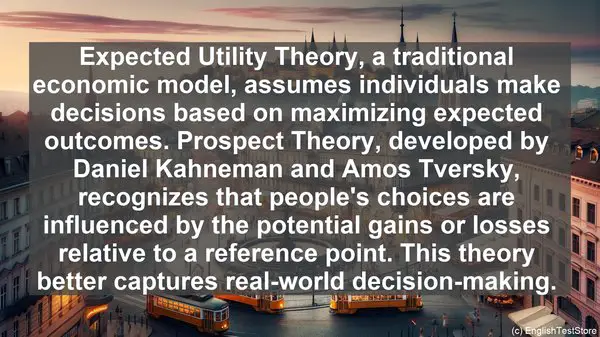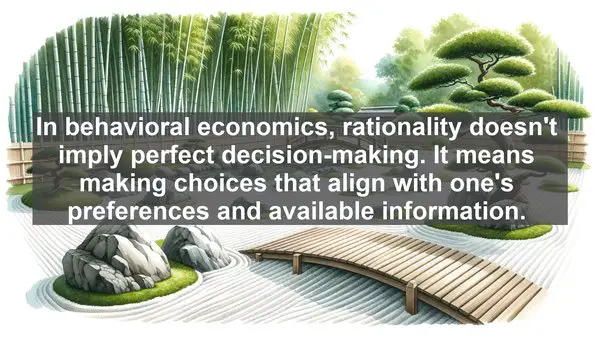Introduction
Today, we’re diving into the fascinating world of behavioral economics. But before we delve deeper, it’s crucial to clarify some commonly confused words. Understanding these distinctions will not only enhance your comprehension but also prevent misunderstandings in your future studies and career.
1. Rationality vs. Irrationality
In behavioral economics, rationality doesn’t imply perfect decision-making. It means making choices that align with one’s preferences and available information. Irrationality, on the other hand, refers to decisions that deviate from this ideal. It’s important to note that irrational choices can still be predictable and systematic.
2. Risk vs. Uncertainty
While often used interchangeably, risk and uncertainty have distinct meanings. Risk involves situations where the probabilities of different outcomes are known. Uncertainty, however, arises when the probabilities are unknown or cannot be quantified. This distinction has significant implications in decision-making and the strategies employed.
3. Anchoring vs. Framing
Anchoring refers to the tendency to rely heavily on the first piece of information encountered when making decisions. Framing, on the other hand, involves how a problem or choice is presented. Both concepts highlight the influence of context on decision-making, showcasing the importance of considering multiple perspectives.
4. Endowment Effect vs. Loss Aversion
The endowment effect refers to the tendency to value something more once we possess it. Loss aversion, on the other hand, is the preference to avoid losses over acquiring equivalent gains. Both concepts shed light on the emotional and psychological factors that shape our choices, even when they may not align with pure economic rationality.

5. Nudge vs. Paternalism
Nudge, a term popularized by behavioral economist Richard Thaler, refers to interventions that subtly influence choices without restricting options. It’s a gentle push in a particular direction. Paternalism, on the other hand, involves more direct control or restriction. The distinction is crucial in understanding the ethics and effectiveness of different interventions.
6. Heuristics vs. Biases
Heuristics are mental shortcuts or rules of thumb that simplify decision-making. Biases, on the other hand, are systematic deviations from rationality. While heuristics can be efficient, they can also lead to biases. Understanding this interplay is essential in comprehending the complexities of decision-making processes.
7. Prospect Theory vs. Expected Utility Theory
Expected Utility Theory, a traditional economic model, assumes individuals make decisions based on maximizing expected outcomes. Prospect Theory, developed by Daniel Kahneman and Amos Tversky, recognizes that people’s choices are influenced by the potential gains or losses relative to a reference point. This theory better captures real-world decision-making.

8. Altruism vs. Reciprocity
Altruism refers to selfless actions undertaken for the benefit of others. Reciprocity, on the other hand, involves responding to others’ actions with similar actions, whether positive or negative. Both concepts play significant roles in social interactions and can shape economic behavior in various contexts.
9. Time Discounting vs. Hyperbolic Discounting
Time discounting refers to the tendency to value immediate rewards more than delayed ones. Hyperbolic discounting, however, involves a more pronounced preference for immediate rewards, with the discounting rate decreasing as the delay increases. This distinction has implications in areas such as saving, investment, and addiction.
10. Incentives vs. Motivations
While often used interchangeably, incentives and motivations have subtle differences. Incentives are external factors that drive behavior, often in the form of rewards or punishments. Motivations, on the other hand, are internal drives or desires. Understanding both can provide insights into what influences and guides human actions.
